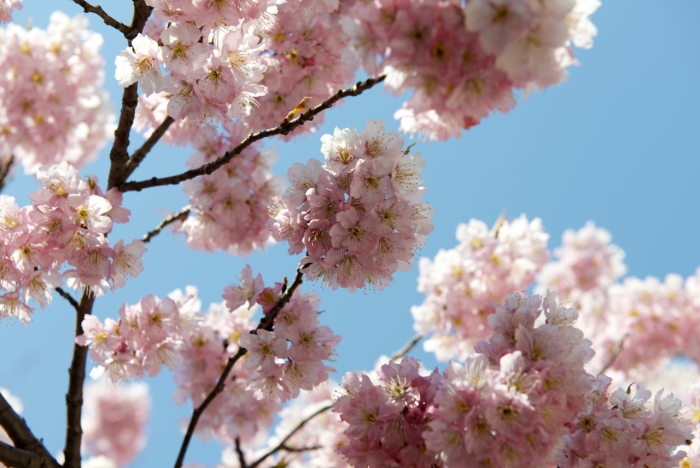Winter-Flowering Cherry
(Prunus subhirtella)
Winter-Flowering Cherry (Prunus subhirtella)
/
/

Koichi Oda
CC BY-SA 2.0




























Estimated Native Range
Summary
Winter-Flowering Cherry is valued for its early bloom time, providing a welcome burst of color in late winter to early spring. It is often used in ornamental plantings, residential landscapes, and along streets for its attractive flowers and relatively small size. This tree prefers well-drained, fertile soils and is adaptable to full sun or part shade conditions. While it is generally easy to maintain, it can be susceptible to pests and diseases common to Prunus species, such as aphids and cherry leaf spot. In terms of cultivation, it is important to provide adequate water, especially during dry periods, to ensure healthy growth and flowering.CC BY-SA 4.0
Plant Description
- Plant Type: Tree
- Height: 20-30 feet
- Width: 15-25 feet
- Growth Rate: Moderate
- Flower Color: Pink, White
- Flowering Season: Spring, Winter
- Leaf Retention: Deciduous
Growth Requirements
- Sun: Full Sun, Part Shade
- Water: Medium
- Drainage: Medium
Common Uses
Bee Garden, Bird Garden, Border Plant, Butterfly Garden, Drought Tolerant, Fragrant, Hummingbird Garden, Rabbit Resistant, Salt Tolerant, Showy Flowers, Street Planting, Water Garden
Natural Habitat
Forested hills and mountainous areas of Japan
Other Names
Common Names: Rosebud Cherry, Spring Cherry, Autumn Cherry, Weeping Japanese Cherry, Higan Cherry, Winter Flowering Cherry, Frühjahrs Kirsche, Higankirsche, Cerisier D’Hiver, Azuma-Higan
Scientific Names: , Prunus subhirtella, Cerasus subhirtella, Prunus herincquiana, Prunus subhirtella var. subhirtella, Prunus changyangensis, Cerasus ×makinoana, Cerasus herincquiana, Cerasus subhirtella var. ascendens, Prunus ×kohigan
GBIF Accepted Name: Prunus subhirtella Miq.